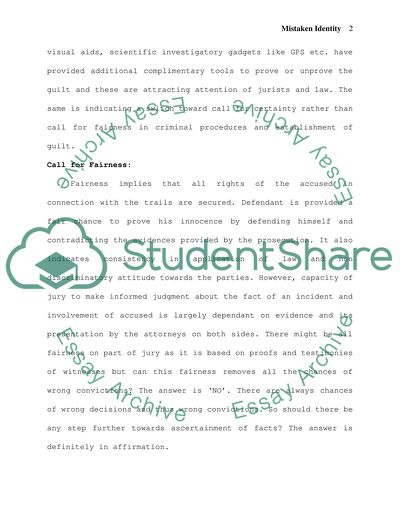Cite this document
(“'The law related to cases of mistaken identity illustrates a tension Essay”, n.d.)
'The law related to cases of mistaken identity illustrates a tension Essay. Retrieved from https://studentshare.org/miscellaneous/1561896-the-law-related-to-cases-of-mistaken-identity-illustrates-a-tension-between-calls-for-certainty-and-calls-for-fairness-discuss
'The law related to cases of mistaken identity illustrates a tension Essay. Retrieved from https://studentshare.org/miscellaneous/1561896-the-law-related-to-cases-of-mistaken-identity-illustrates-a-tension-between-calls-for-certainty-and-calls-for-fairness-discuss
('The Law Related to Cases of Mistaken Identity Illustrates a Tension Essay)
'The Law Related to Cases of Mistaken Identity Illustrates a Tension Essay. https://studentshare.org/miscellaneous/1561896-the-law-related-to-cases-of-mistaken-identity-illustrates-a-tension-between-calls-for-certainty-and-calls-for-fairness-discuss.
'The Law Related to Cases of Mistaken Identity Illustrates a Tension Essay. https://studentshare.org/miscellaneous/1561896-the-law-related-to-cases-of-mistaken-identity-illustrates-a-tension-between-calls-for-certainty-and-calls-for-fairness-discuss.
“'The Law Related to Cases of Mistaken Identity Illustrates a Tension Essay”, n.d. https://studentshare.org/miscellaneous/1561896-the-law-related-to-cases-of-mistaken-identity-illustrates-a-tension-between-calls-for-certainty-and-calls-for-fairness-discuss.


